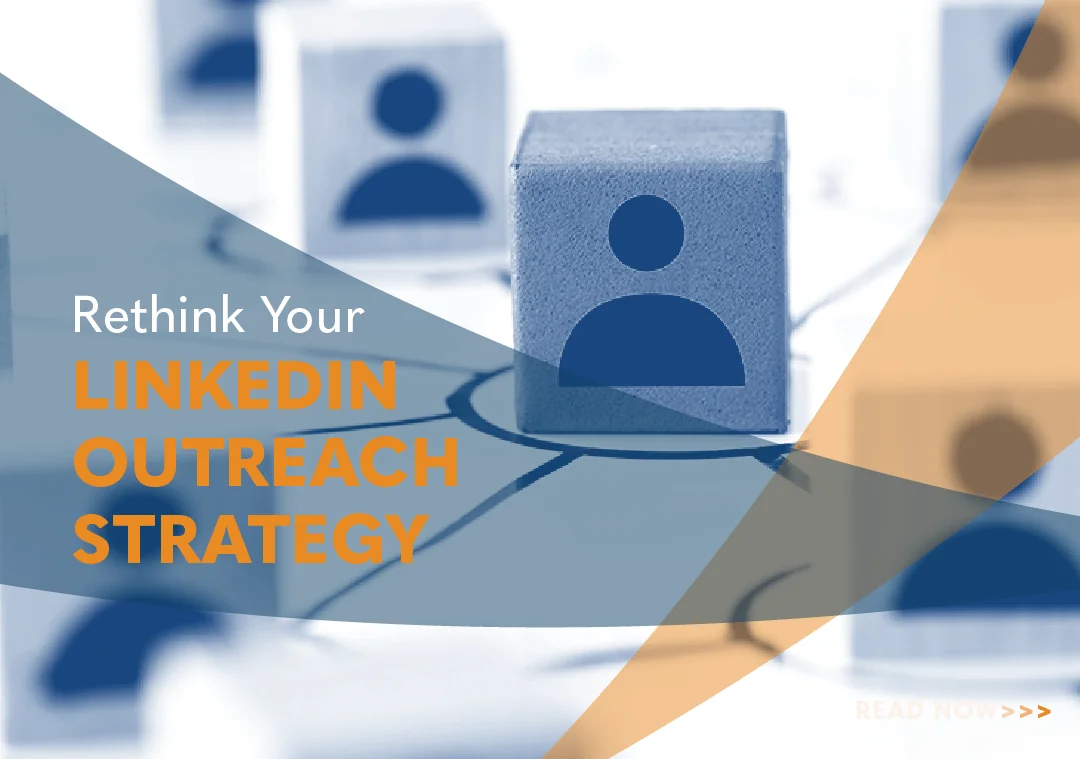Rethink Your LinkedIn Outreach Strategy

Have you noticed how the volume of LinkedIn messages has increased dramatically in the last few months? Software automation combined with more users on LinkedIn is definitely changing the game. With the widespread use of automation, LinkedIn users receive a flood of messages, making it difficult for salespeople to connect with decision-makers. In this article, we explore the changing landscape of outreach on LinkedIn and what salespeople can do to avoid being lost in a sea of messages.
Developing the skill to effectively engage with individuals who initially show little interest in conversing with you is crucial in sales. Given the increasing prevalence of marketing automation on LinkedIn, adopting a more personalized approach can yield better results. This customized approach entails two essential steps.
First, it involves creating short-form content tailored to a specific audience. By understanding the needs and preferences of your target audience, you can craft content that resonates with them.
Second, rather than asking for something in return, sharing this content without immediate expectations is key. This approach aims to provide value and build trust with your audience, fostering genuine connections and opening the door for future conversations.
By employing this personalized approach and creating engaging content, sales professionals can enhance their cold outreach efforts on LinkedIn and improve their overall results.
Leverage Content During Contact Initiation
Cold outreach on LinkedIn is not about winning new clients but starting new conversations. Most cold outreach attempts fail because salespeople often ask for an appointment in their first message.
This approach is particularly ineffective when the product being sold requires high trust, such as financial services, insurance, or cybersecurity. In such cases, attempting to secure a meeting in the first interaction has a low probability of success.
Instead of asking to take time from a decision-maker on the first message, turn the message into giving. This strategy is based on the concept that leaders are readers, and salespeople can utilize their LinkedIn posts to initiate a conversation. While writing thought leadership content for the target audience is common knowledge, the question remains: How can salespeople achieve that?
One way is by leveraging real-world examples of recent client successes. By developing content in a storytelling format, following the structure of a three-act play, salespeople can position their solutions as the hero. They begin by outlining the problem, then explain how they solved it, and finally highlight the benefits of the new solutions.
The goal is to engage the audience, who will nod their head in silent agreement while reading, recognizing themselves and the challenges in the story. They will feel that the content understands their business and perceive it as a conversation tailored to their needs rather than a sales pitch. By utilizing relevant real-world stories as content, salespeople can establish a connection with decision-makers, making them feel understood rather than being sold to.
Here is the three-act framework for such content:
- Use the first paragraph to speak directly to your ideal customer profile. Here’s an example: “Last month, a financial planner who just received his CFP license…” Be very clear about who you are talking about. The goal is to have your target audience think, “Hey, that’s me.”
- Talk about the problem your client was living with that they wanted solved. “They reached out and said that due to market conditions and higher interest rates, it was becoming more challenging to find new clients and keep existing clients happy.” These are the real-world problems your clients face that you have recently solved for them. The more details you can share, the better.
- Explain the solution you provided and the outcome you received. “We suggested that they try X, Y, and Z because [provide additional context]. When I followed up after 30 days, they reported experiencing [the specific benefit of your solution].”
The Cold Outreach Message
Once you have created a short-form piece of content following the three-act story format, the next step is to share it with the persona that matches the story. When reaching out, your message can be as simple as:
“Hi Tracey, I wanted to share a recent post I published about the [challenges that your ideal target customer faces]. If you missed it, here’s the link: [insert link]. I thought you would find it valuable and informative. Best regards, Justin.“
By personalizing your message and offering the content without any immediate requests or expectations, you can foster a genuine connection and pique the interest of your recipient, increasing the likelihood of starting a meaningful conversation.
Here’s what makes this cold outreach strategy impactful: When you include the LinkedIn URL of your post, LinkedIn generates a preview that displays the first three lines of your post. As a result, the recipient will immediately connect with the story because it aligns perfectly with their own experiences. They will feel a strong sense of personal relevance and be compelled to read further as if you are speaking directly to them.
Moreover, what sets your approach apart is what you didn’t do. You avoided coming across as overly salesy or pushy by refraining from making an awkward request for an appointment in your initial outreach. Instead, you distinguished yourself from other sales representatives by creating a thought leadership piece in a digestible story format. This approach helps you establish credibility and engage your prospects in a way that stands out from the crowd.
Shortcut to Storytelling
When it comes to writing for sales, one of the best pieces of advice I’ve received was, “Don’t write how you talk; write how your customers talk.” Our customers often have unique terminology and expressions, and speaking to them using their own words can be incredibly powerful.
However, it can also present challenges, particularly if we are not natural writers or struggle to think from the customer’s perspective.
Fortunately, several valuable sources can provide insights into how customers express themselves:
- Online reviews: One effective approach is to explore online reviews, particularly one-star reviews, which can reveal specific problems and complaints that customers have. By understanding their pain points, we can tailor our messaging to address these concerns directly.
- Online forums: Mining through threads and discussions in online forums allows us to identify popular topics and trends. Reading the replies and comments can inspire our creativity and provide a deeper understanding of our customers’ perspectives.
- Earnings call transcripts: If our target market includes enterprise customers, analyzing earnings call transcripts can be a powerful strategy. Extracting quotes from CEOs or other high-level executives and incorporating them into our content can get you the attention you’re looking for.
By leveraging these sources, we can gather valuable insights and incorporate the language and sentiments of our customers into our content creation process. This approach enhances our ability to connect with our target audience and speak directly to their needs, ultimately driving better engagement and sales conversations.
In Conclusion
LinkedIn has witnessed a surge in message volume over the past few months. It’s likely a combination of more automation, more users, and sales reps needing to hit their numbers in a slowing economy. This influx of messages has made it increasingly challenging for salespeople to connect with decision-makers. However, by adopting a two-step personalized approach and creating engaging content, sales professionals can rise above the noise and initiate meaningful conversations.
The power of personalized outreach lies in its ability to resonate with the target audience. By leveraging real-world examples, telling compelling stories, and framing solutions as heroes, salespeople can captivate decision-makers who relate to the content personally. This approach positions sales professionals as trusted advisors rather than mere sellers.
Ultimately, the key to successful outreach lies in speaking your customers’ language, understanding their needs, and offering valuable insights without immediate expectations. Embracing this mindset and leveraging the tools at your disposal will enable you to navigate the challenging landscape of LinkedIn cold outreach and achieve greater success in engaging decision-makers.

- Account Planning (11)
- Awards (49)
- Client Testimonial (37)
- Personal Branding (19)
- Podcast (11)
- Research (70)
- Sales Career Development (87)
- Sales Coaching (156)
- Sales Consulting (137)
- Sales Culture (170)
- Sales Enablement (354)
- Sales Leadership (109)
- Sales Management (248)
- Sales Negotiation (16)
- Sales Prospecting (125)
- Sales Role-Playing (18)
- Sales Training (235)
- Selling Strategies (263)
- Soft Skills (70)
- Talent Management (94)
- Trusted Advisor (27)
- Virtual Selling (49)
- Webinar (9)


























